Quality: The Path to Durable Competitive Advantage
Quality companies deserve more credit for the power to compound growth over many years. We look at why it’s important to focus on identifying companies with durable competitive advantages at a reasonable price and holding them for the long-term.
In the early 1990s, Eugene Fama and Kenneth French famously introduced the concept of a multi-factor investment model to the investment world. They started with three factors: Market (beta), Value, and Small Cap. From there, the search for factors has exploded to include by some counts more than 150 distinct factors.1 Within that group of 150, there are many factors that are often loosely grouped and labelled “Quality”. It’s what Morningstar has called the “fuzziest of factors”, and for good reason: nobody really agrees on the definition.2
Most investment factors in some way capture risk: for example, small-cap stocks by their nature are higher risk and therefore deserve a risk premium. With higher risk comes higher reward. This is a central concept of investing.
Quality, on the other hand, which typically attempts to capture some measure of stability, profitability, and leverage, is associated with lower risk. This creates some confusion among practitioners. For example, in 2014 capital management firm AQR published a study called “Quality Minus Junk” and concluded: “Our results present an important puzzle for asset pricing: We cannot tie the returns of quality to risk.”3
For us, State Street’s Fundamental Growth & Core team, we believe that the market tends to be short-term in nature, and so it systematically undervalues companies that deliver long-term sustainable growth. But how do we identify those companies in advance? This brings us back to Quality. But for us, a key flaw in the factor definitions of quality is that they by necessity rely on quantitative measures. Quantitative measures at best tell you the current state of a business, or more often, what’s happened in the past. They are like driving through the rear-view mirror.
But a more basic flaw is that quant factors often measure symptoms of quality rather than quality itself. A physician can judge a patient’s health by looking at measures such as blood pressure or temperature, but a good doctor will look also look at more qualitative aspects like lifestyle, stress levels, family history, and exercise routines. Judging these requires a more hands-on approach—getting to know your patients and following them over the long-term. Doing so makes the doctor much better positioned to diagnose current issues, and more importantly, anticipate future problems.
That is how we think about quality. For us, quality represents attributes of a company that give it a durable competitive advantage. These are often qualitative and require us to get to know our companies well and follow them over the long-term. Attributes like the trustworthiness of the management team, the company culture, brand strength, the competitive moat, the strength of a business model, the structure of the industry, and catalysts that may unlock value or disrupt an incumbent are best assessed through deep company and industry knowledge.
Importantly, we look for quality itself, not just the quantitative symptoms of it. Like a good doctor, our aim is to anticipate problems or improvement and take action accordingly. We could do this by taking the company’s “temperature” through quantitative measures, but in our view, it is far better to understand the true health of the company through qualitative assessment and a long-term relationship. If we can do that successfully, we believe we can find and hold companies with durable growth that extends beyond the myopic view of the market’s fading consensus expectations. This results in long-term earnings revisions that we can capture through compounding equity returns.
Figure 1: We Seek to Identify Best-in-class Companies Positioned to Sustain Long-term Growth
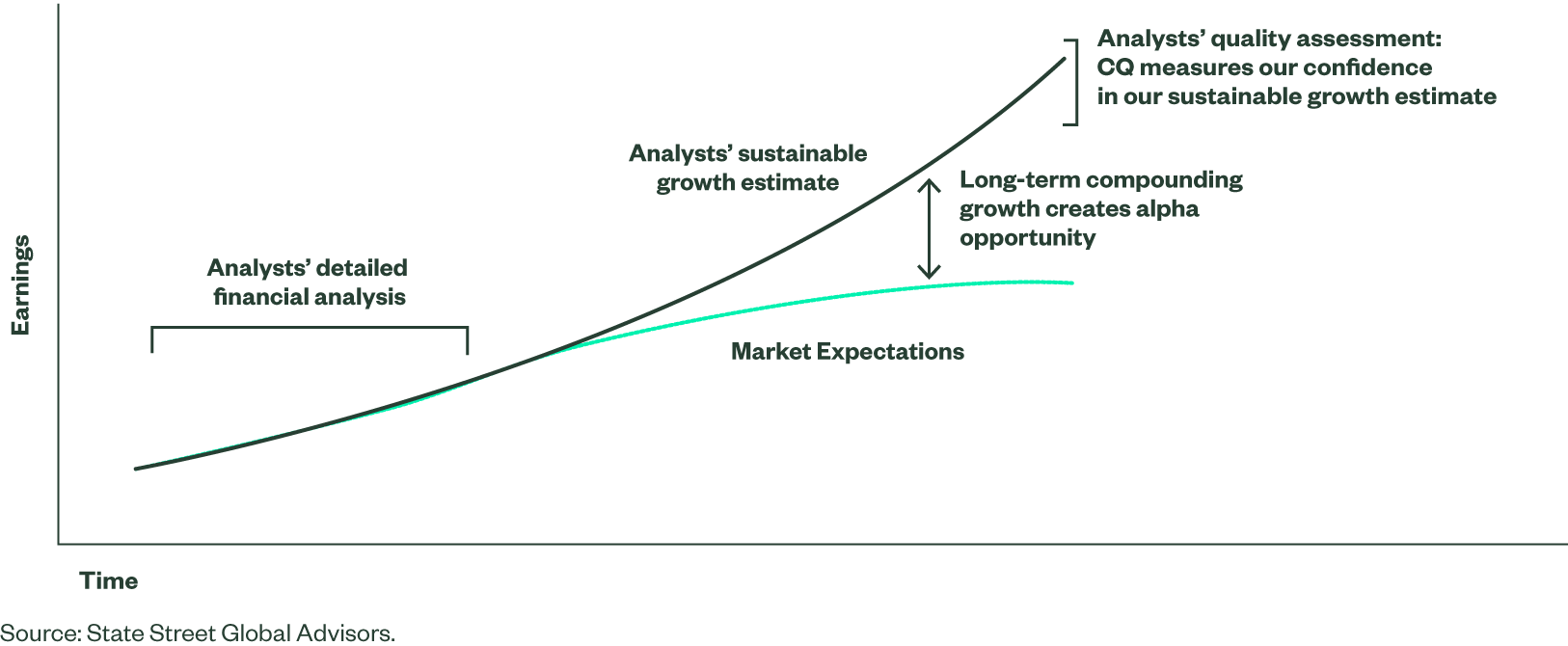
Creating Rigor Around Subjective Judgement
One advantage of quantitative approaches is repeatability. These approaches are based on algorithms that can be back-tested and applied consistently going forward. We speak of quality as qualitative and subjective. So, how do we create a repeatable investment process based on that? Our answer is something we call the Confidence Quotient (CQ). First developed in 2002, the CQ is a framework that our research analysts use to grade a company along a number of attributes that we think contribute to long-term sustainable growth.
Figure 2: The CQ Is Divided Into Five Sub-measures
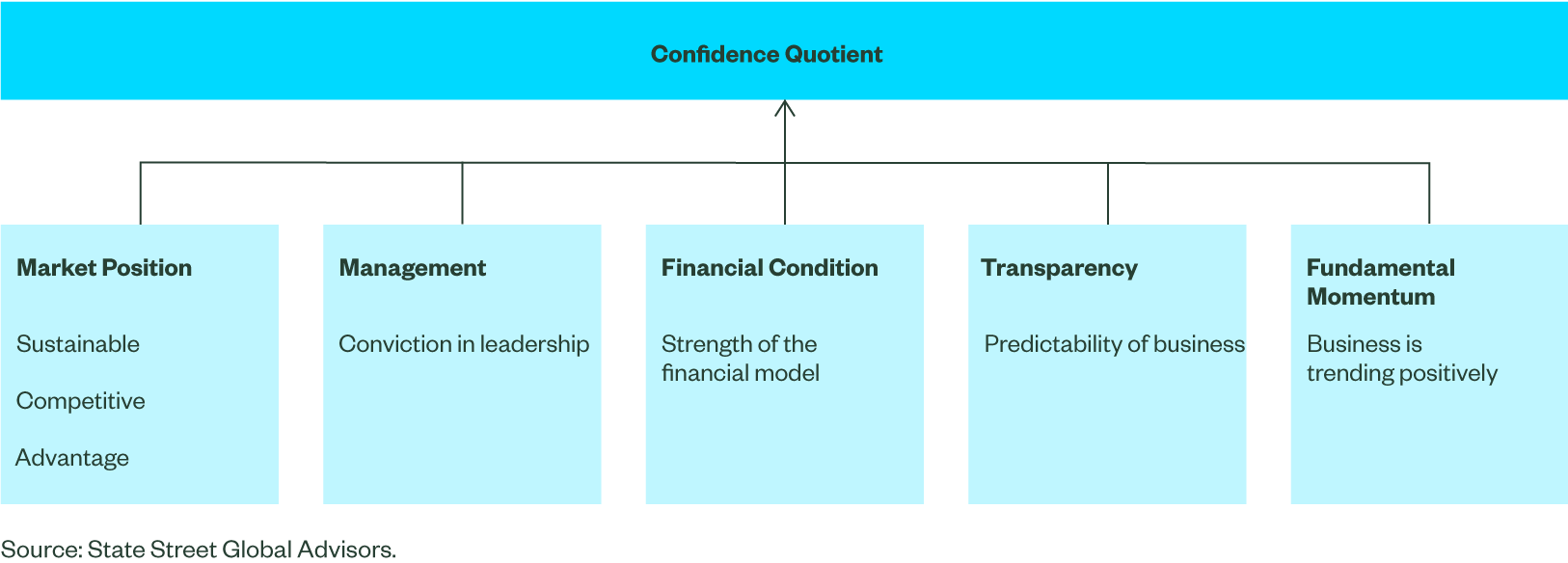
The five sub-measures in turn have numerous supporting attributes, all of which are evaluated and scored by our research analysts. While it doesn’t eliminate subjectivity, the CQ creates rigor and repeatability within the process. It is also measurable over time. As shown in the two charts below, CQ has a very successful track record.
Figure 3a: High-CQ Companies Have Delivered Higher Returns at Lower Risk
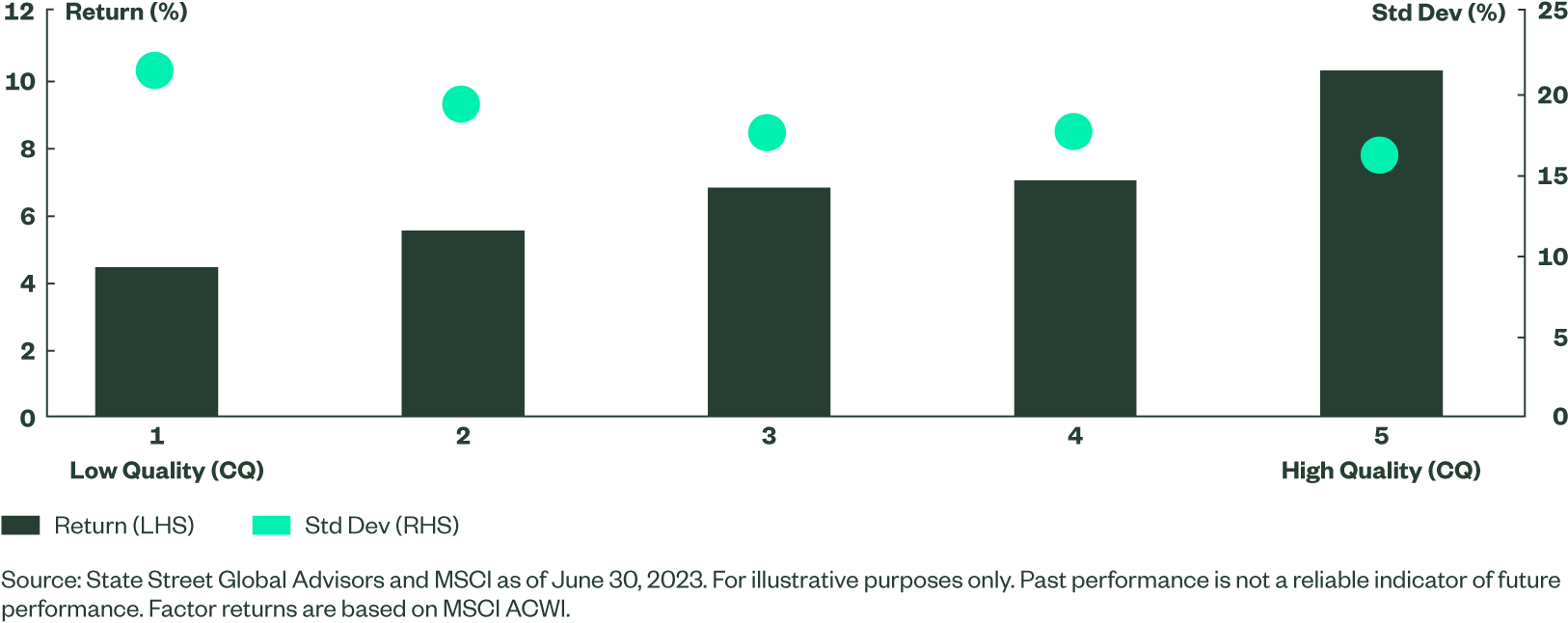
Figure 3b: High-CQ Companies Have Outperformed Quantitative Factors Over the Long Term
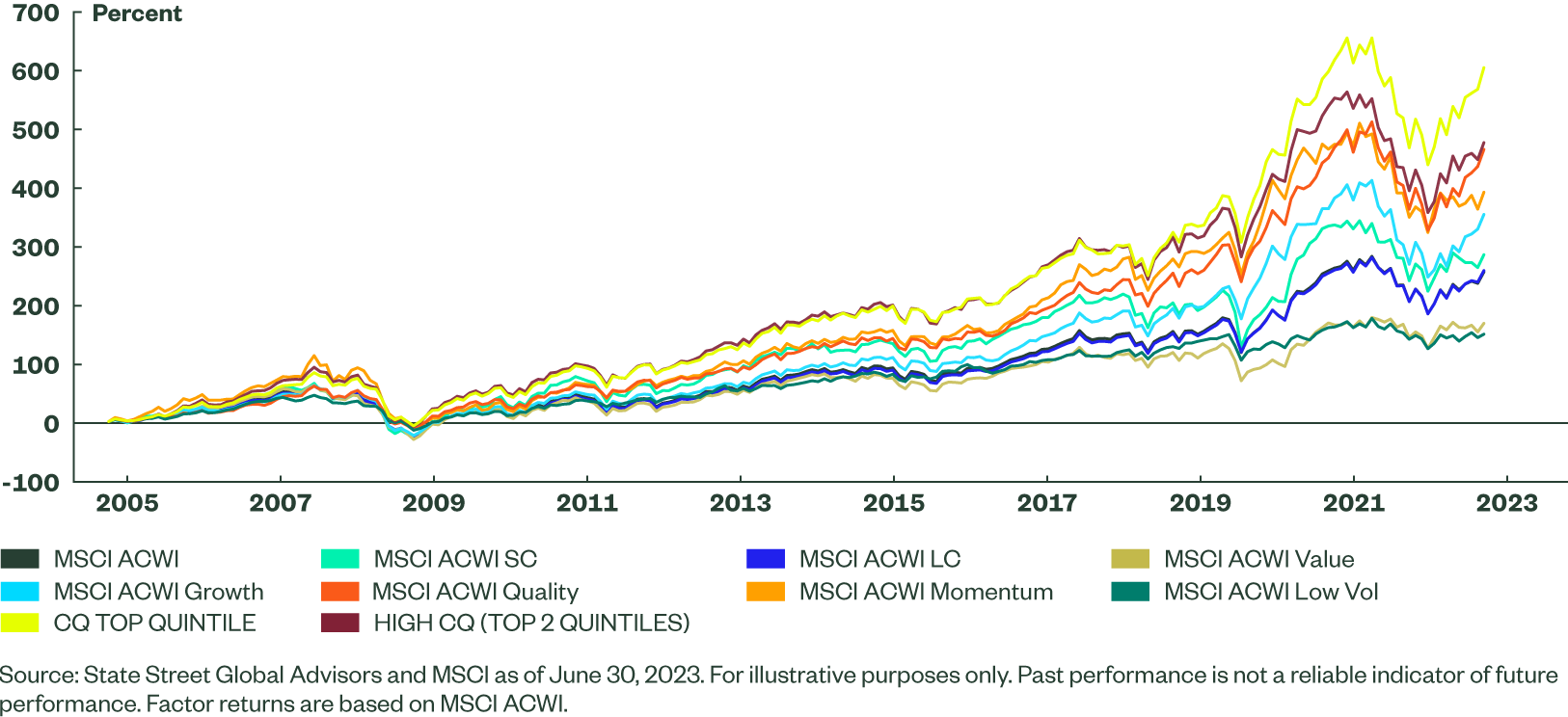
Because our approach is proprietary and based on our team’s judgement, it cannot be replicated. We have done regression analysis of our CQ scores and have found that while there are some correlations with various metrics, there is residual alpha that is not explained by the factors. This becomes apparent in looking at overall factor correlations.
High CQ (measuring the performance of the highest-CQ quintile) has modest positive correlation to growth, quality, and momentum, and negative correlation to value. But in almost all cases, the correlation of High CQ to these factors is lower (absolute) than the Quality factor’s correlation.
Figure 4: CQ Is Differentiated Versus Factor-Based Approaches
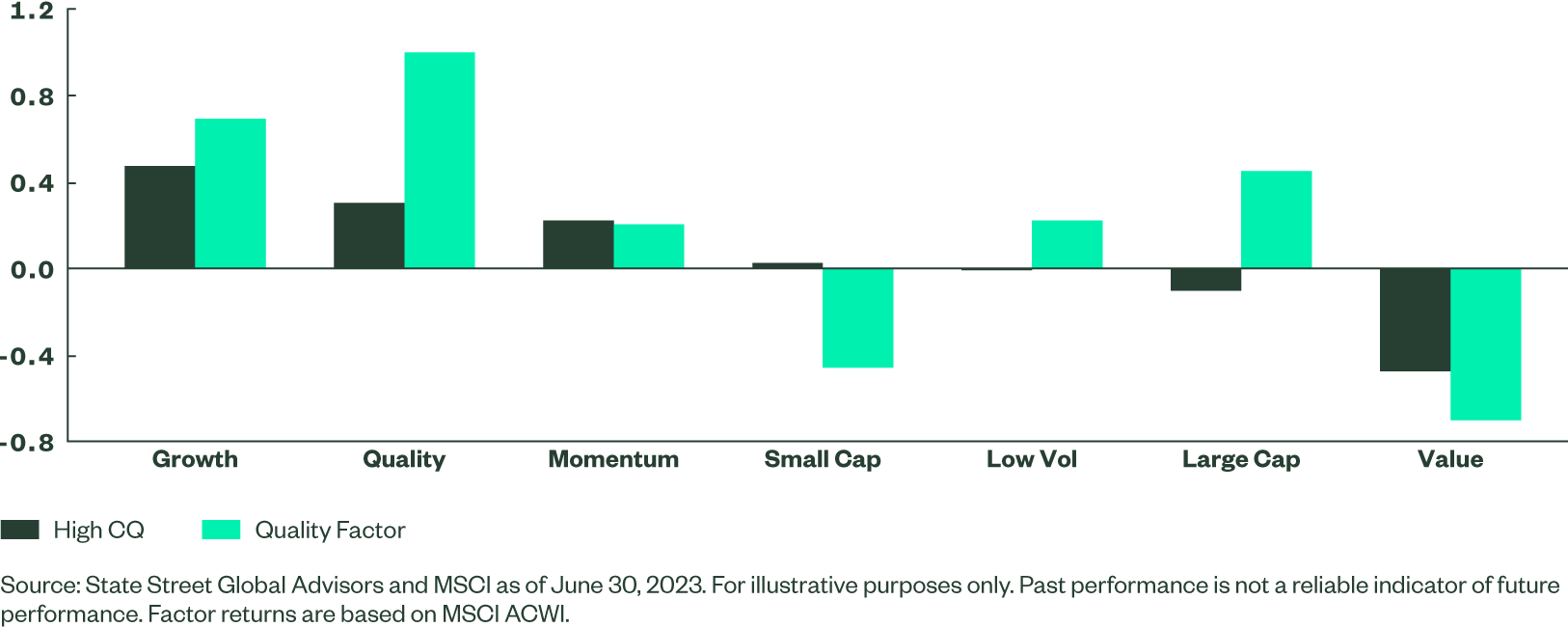
Confidence Quotient Example
To illustrate how CQ works in practice, here is an example of Management and Market Position analysis for French luxury group LVMH (“LV”). LV is a great example of a company that has been able to promote expansion through both organic growth and M&A, all while preserving its exclusive brand strength. LV’s acquisitions can depress Return on Invested Capital (ROIC), a common quality metric, but its long-term outperformance supports the case for its quality. LV’s strengths derive from many intangible factors, some of which are shown here.
Figure 5: LV Management and Market Position CQ
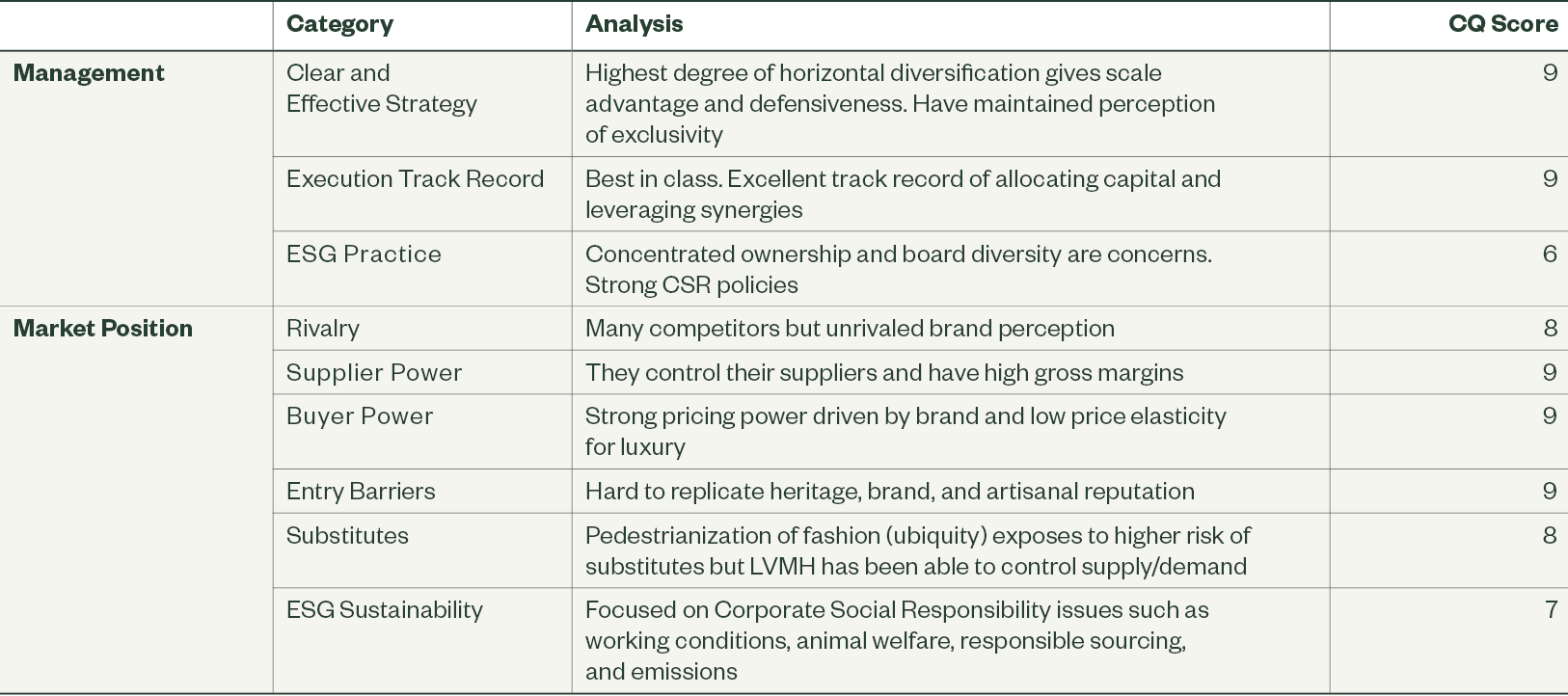
“You Say You’re a Quality Manager…”
When evaluating active managers, most consultants recognize that the ability to deliver alpha often comes down to more intangible factors—people, process, philosophy—which they evaluate through detailed meetings with the managers. But by necessity, they will often do a quantitative assessment of things like style and sources of alpha. We sometimes hear things like “you say you’re a quality manager, but your portfolio Return on Equity (ROE) doesn’t reflect that”, or “your excess return can be explained by a combination of quality, growth, and momentum tilts”. The flaw in these types of conclusions is they are disconnected from our philosophy and approach. If the measure is not tied to our approach, then it is nothing more than correlation, which we all know doesn’t suggest causation.
Take the example of profitability metrics like ROE, ROIC, and Return on Assets (ROA). These can be distorted by share buybacks, leverage, acquisitions, inflation, FX transactions, general accounting practices, and more. In our portfolios, we have companies that we would call high quality, that score low in some of these areas.
For example, a software name like Salesforce has a lower ROE and ROIC today because it continues to invest in growth by building their installed customer base, which depresses present returns in favor of larger future ones. This makes sense for a company like Salesforce which tends to have sticky customers, delivering recurring revenue year after year. Understanding Salesforce’s business model is much more important in predicting future returns than its ROE. Amazon is a similar example of a company that invests in its business, creating a moat through massive scale advantages and network effects. This has often depressed profitability, but they are now at the point that they can leverage that installed infrastructure and are seeing rising margins.
Figure 6: Salesforce: Growing Revenue, yet ROE Lower Than the Broader Index
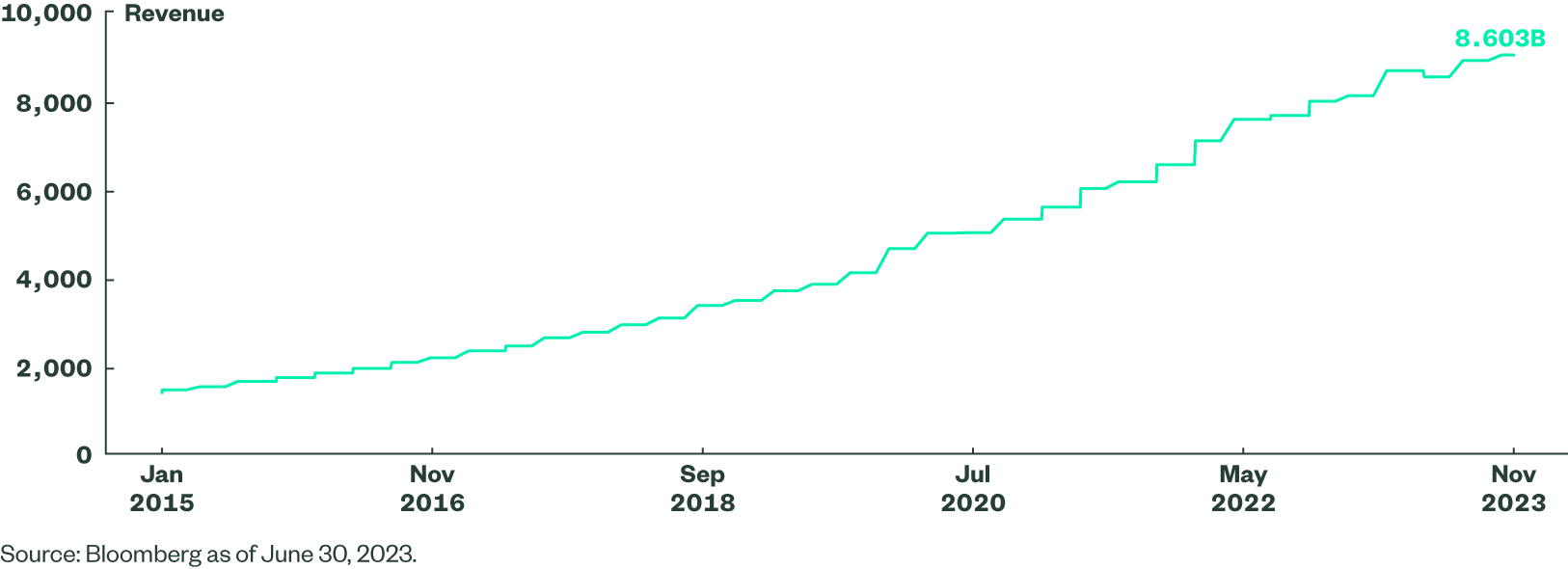
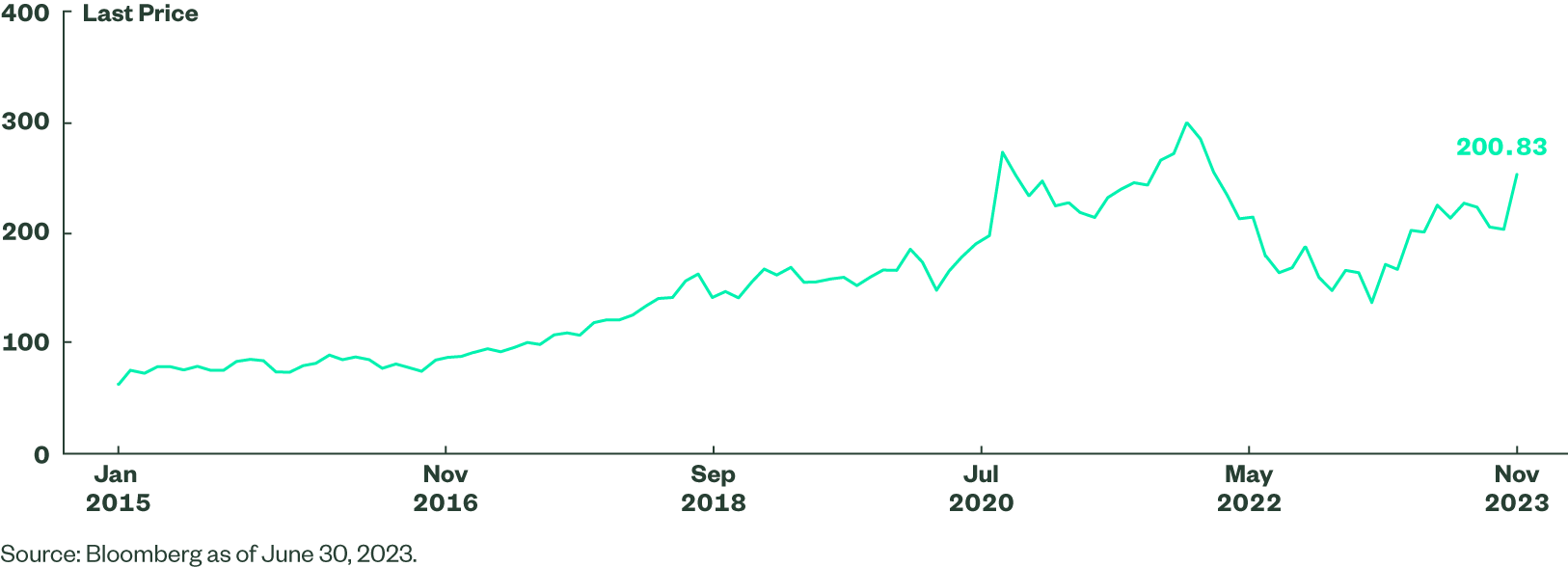
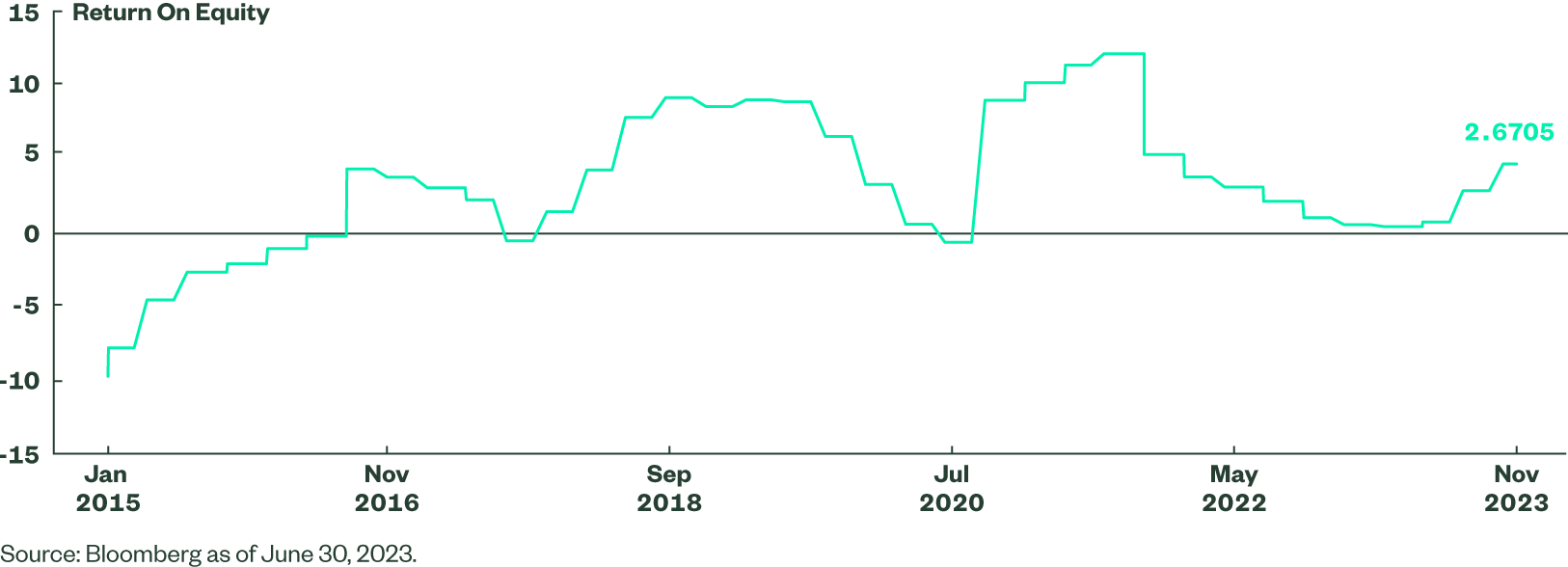
Many of these companies have intangible qualities, identified by our analysts based on their deep knowledge of each, including competitive moats, leading market position, goodwill, trusted and/or luxury brands with pricing power in adverse economic conditions, or other unique catalysts to unlock sustained earnings growth. These quality attributes aren’t factored into traditional quality metrics and can’t be replicated quantitatively.
Conversely, today some of the highest-ROA companies are mining and oil and gas production, which would not score well in our CQ quality assessment, particularly on a forward-looking basis. These companies have been attractive at other points in the cycle –for example, in the early 2000s as secular growth drivers like a massive investment cycle in China –drove commodity-related companies higher. But today they lack these tailwinds.
Another example is earnings volatility, another commonly used but flawed quality factor. First, it is backward looking, so doesn’t necessarily reflect what a business will look like in the future. Second, it is attempting to measure a symptom of something more fundamental, which in this case are things like management talent, business model, and market position. We’d prefer to evaluate those directly, rather than a vaguely related metric like earnings volatility. The third flaw lies in our view that volatility is itself a flawed measurement of risk. What investors care about is loss of capital, not standard deviation.
To illustrate this, we can separate volatility into upside and downside components. In the analysis below, we used our US Equity Select strategy, which has a higher revenue volatility than the S&P 500. A quant-oriented consultant might say that this demonstrates lower quality. But if you bifurcate it, you find that the higher volatility is a result of higher upside volatility, which is a good thing. Downside volatility is actually lower than the index.
Figure 7: US Equity Select: Higher Upside Volatility and Lower Downside Volatility
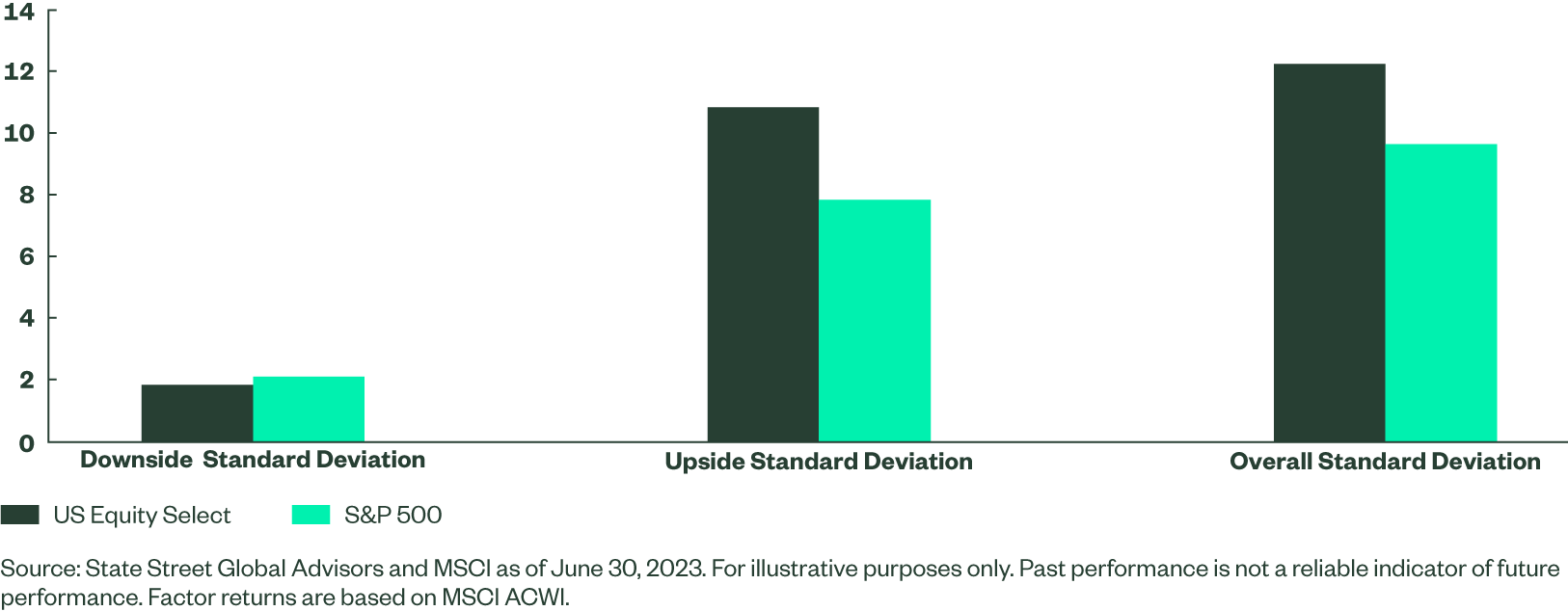
Quality of the Future
Our concept of quality and our alpha thesis broadly is dependent on a forward-looking, long-term perspective. Company financial statements are an important input to fundamental and quantitative analysis. They tell you where a business stands and how it is trending. Assuming nothing changes, it’s reasonable to expect that the past trajectory will continue into the future.
But this may not be a very good assumption.
In recent years, we’ve seen a series of shocks: the pandemic, supply chains, inflation, interest rates, geopolitical disruptions, and generative AI to name a few. And these may pale in comparison to the slower moving but potentially devastating impact of global warming. We expect the pace of change, and especially the proliferation of technology throughout the economy, to drive significant disruption in the coming years.
This is why a quality focus is so important. We don’t have a crystal ball, but we do know that companies with experienced management teams, a culture of innovation and change, strong market position or business models, and solid financials are most likely to thrive as the world changes. Recently, as inflation and higher interest rates have been stickier than almost anyone expected, quality companies with pricing power and scale efficiencies were best positioned to adapt. Investors who focus on past trends tend to undervalue companies with competitive advantages that will likely be durable in a rapidly changing environment.
Closing Thoughts
Quality is hard to define. The original Latin root suggests this difficulty: “qualitas” which is translated imprecisely as character, nature, or characteristic. In the consumer product realm, quality is often associated with luxury, a combination of brand and often intangible attributes. There are experts and curators who are paid large amounts to identify it.
The definition of quality is no less fraught in investing. It seems reasonable that quality would be a good thing, but it gets tangled up in discussions of how to define it, what to pay for it, and risk. Our team tends to sidestep these debates by staying laser-focused on our own time-tested approach: buy companies with durable competitive advantages at a reasonable price and hold them for the long-term. The market rarely gives these companies credit for the power of compounding growth realized over many years. That’s our alpha thesis, and it’s built on a foundation of Quality.
In our view, alpha is an output. The inputs are a differentiated and disciplined process, a strong team and culture, a long-term investment horizon, a fiduciary mindset with strong risk management, and a high conviction approach. Our Quality framework—the Confidence Quotient—is a critical component of this process, and for more than two decades it has been used to gauge the sustainable growth potential of portfolio companies. We believe these ingredients provide us an edge in the market that will be durable going forward.